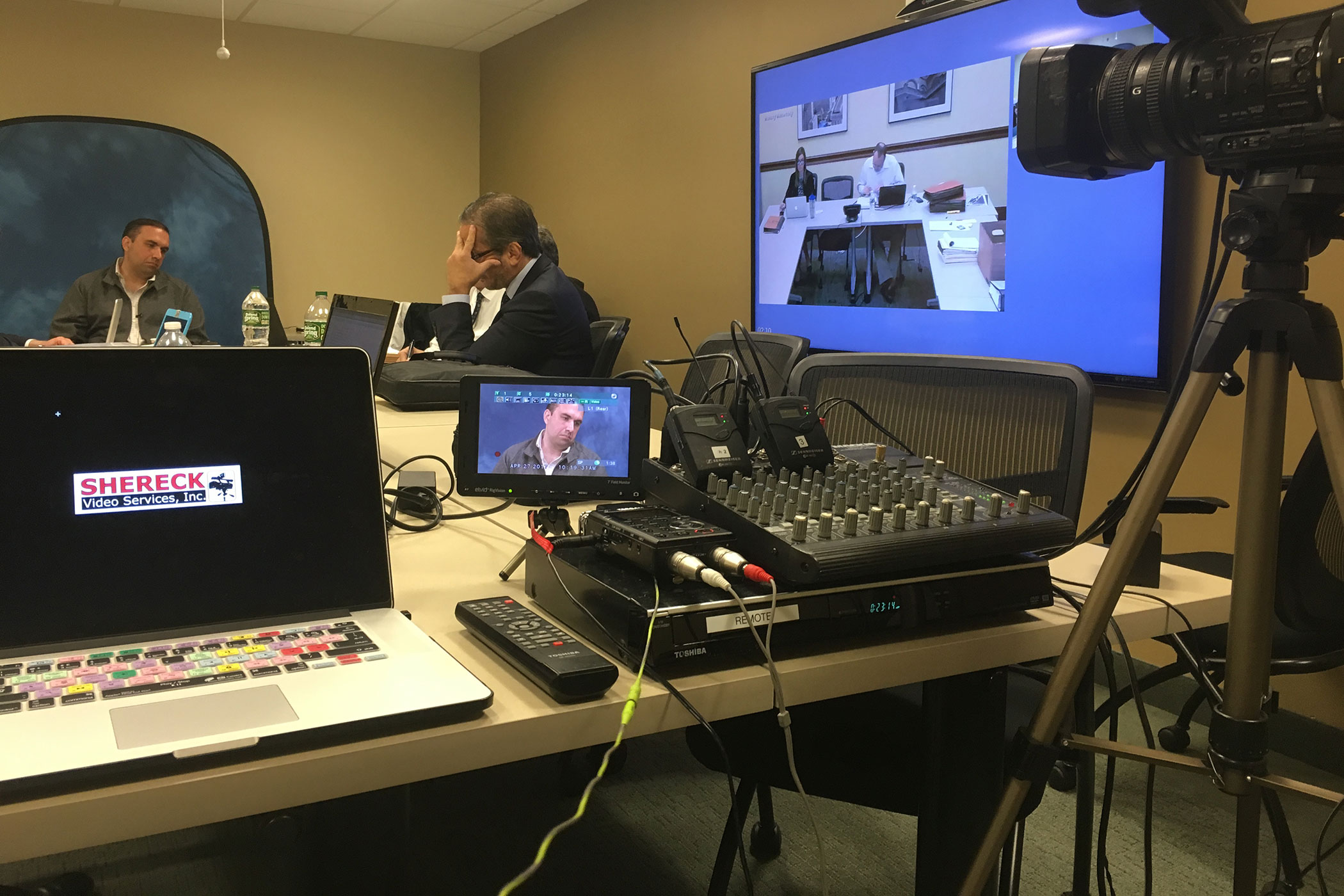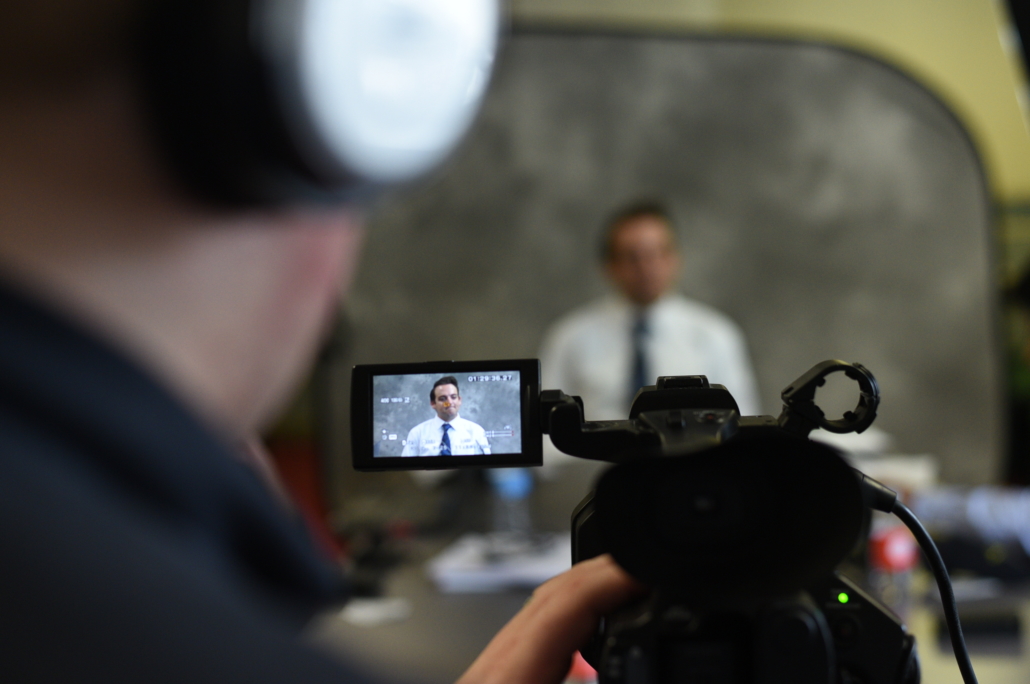The Ultimate Guide to Legal Videography for Attorneys and Legal Teams
Looking Into the Mechanisms of Legal Videography: Unveiling Its Procedure in Shielding Genuine Visual Testimony for Judicial Procedures
In the realm of judicial proceedings, the duty of lawful videography stands as a keystone in protecting and providing visual proof. As innovation remains to advancement, the mechanisms behind lawful videography have actually ended up being increasingly detailed, using a critical layer of credibility to testimonies captured on video clip. By delving into the functional ins and outs of lawful videography, one can reveal the thorough procedures that protect the honesty of aesthetic evidence offered in courts - Legal Videography. This exploration not just clarifies the historic development of lawful videography yet also means the future patterns that might even more revolutionize just how visual testaments are supported in the world of justice.
Historical Advancement of Legal Videography
Taking a look at the historic progression of legal videography discloses a significant change in the recording and discussion of visual evidence within the legal landscape. In the past, lawful process heavily counted on composed records and pictures to record occasions and supply evidence. With the development of video clip modern technology, the lawful market observed a standard change in just how aesthetic testament was captured and presented.
The evolution of legal videography can be traced back to the late 20th century when developments in video recording equipment made it much more available for use in courts. This technological development not only enhanced the accuracy and dependability of visual proof yet additionally changed the means cases existed to courts and judges (Legal Videography). Attorneys began to recognize the influential power of video clip recordings in communicating emotions, nuances, and non-verbal cues that created photos or transcripts alone could not catch successfully

Modern Technology Developments in Video Clip Documents
What crucial technical improvements have changed video clip paperwork in the legal field? The lawful area has actually seen considerable developments in video documentation technology that have actually boosted the authenticity and reliability of visual proof in judicial procedures. One of the key innovations is high-def (HD) video clip recording abilities, which offer crystal-clear pictures and sharp details that are important for precisely catching testimonies, faces, and other aesthetic cues. Furthermore, the integration of timestamping and metadata attributes in video documentation tools has allowed specific documentation of when and where the video was videotaped, making certain the stability of the evidence provided in court.
Additionally, advancements in video clip security and watermarking innovations have actually bolstered the safety and tamper-proof nature of video clip evidence, protecting it versus unauthorized modifications or meddling. Furthermore, the introduction of cloud storage space remedies and remote access abilities has structured the storage space, retrieval, and sharing of video evidence, facilitating seamless partnership amongst attorneys and guaranteeing effective accessibility to crucial aesthetic testaments when required. These technical improvements in video clip documents have actually most certainly revolutionized the lawful area, boosting the precision, credibility, and admissibility of visual proof in judicial process.
Duty of Lawful Videographers in Court Settings
The development of video documents innovation in the legal area has actually necessitated a vital function for legal videographers in court room settings, ensuring the honesty and dependability of visual testaments provided during judicial process. Legal videographers play a basic function in capturing and protecting accurate aesthetic evidence that can be essential in litigation. Their responsibility reaches establishing tools, tape-recording process, and creating top quality video clips that accurately show the events in the court.
In courtroom settings, lawful videographers should follow strict standards and standards to preserve the credibility of the visual document. They have to possess an eager eye Click This Link for detail and an extensive understanding of lawful treatments to guarantee that the footage they record is a true depiction of the events that transpired. In addition, lawful videographers typically function closely with legal groups to ensure that the video clip proof aligns with the situation's needs and can be effectively presented in court to sustain the lawful debates being made. In general, the function of lawful videographers in court room setups is essential in maintaining the concepts of justice and ensuring the transparency of legal procedures.

Ensuring Admissibility and Stability of Video Clip Evidence
To maintain the integrity of aesthetic evidence provided in lawful process, ensuring the admissibility and stability of video clip proof is a critical responsibility for legal videographers. Admissibility refers to the acceptance of proof by the court, and for video proof to be acceptable, it must satisfy particular standards. Lawful videographers play an important function in making linked here certain that the video clips they catch abide by the policies of proof, such as reliability, authenticity, and relevance.
Honesty of video evidence entails maintaining the creativity and precision of the video footage from the time it is tape-recorded until it is provided in court. This includes securely saving the video clip data, documenting the chain of custody, and preventing any meddling or changes. Lawful videographers need to stick to strict protocols to assure the stability of the video evidence and protect against any kind of difficulties to its authenticity.
Future Trends in Legal Videography
Given the raising dependence on technology in lawful procedures, legal videographers are positioned to accept ingenious advancements forming the future of aesthetic testament capture and presentation. Among the popular fads on the horizon is the assimilation of online reality (VIRTUAL REALITY) and enhanced reality (AR) modern technologies into lawful videography. These innovations have the potential to change exactly how visual proof exists in court rooms, allowing discretionary to submerse themselves in the scene of the crime or case.
Additionally, using expert system (AI) algorithms for video clip analysis is anticipated to streamline the procedure of reviewing and examining huge amounts of video clip footage. AI can aid in identifying crucial minutes, abnormalities, and patterns within video clips, boosting the effectiveness of lawful investigations.

Verdict
Finally, lawful videography has actually played an essential role in giving authentic aesthetic evidence for judicial procedures. Through official site technological innovations and the know-how of legal videographers, the stability and admissibility of video clip evidence are made sure in court room settings. As lawful videography remains to develop, it will certainly be vital to maintain criteria that maintain the accuracy and integrity of visual testament for the future of legal proceedings.
Taking a look at the historic progression of legal videography exposes a substantial transformation in the catching and discussion of aesthetic proof within the legal landscape.The evolution of video paperwork modern technology in the lawful field has required a vital duty for lawful videographers in courtroom settings, guaranteeing the stability and dependability of aesthetic testaments offered during judicial procedures. In addition, lawful videographers often work closely with legal teams to guarantee that the video evidence lines up with the situation's demands and can be successfully provided in court to support the legal disagreements being made.To maintain the trustworthiness of aesthetic evidence presented in legal proceedings, ensuring the admissibility and honesty of video clip proof is an important duty for lawful videographers. As legal videography continues to evolve, it will be vital to maintain standards that preserve the precision and reliability of aesthetic testament for the future of lawful procedures.